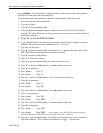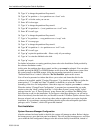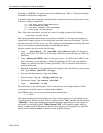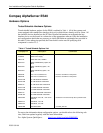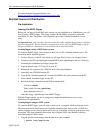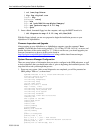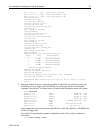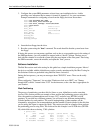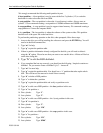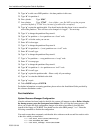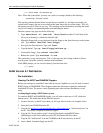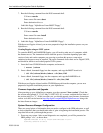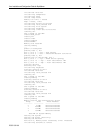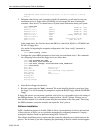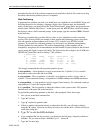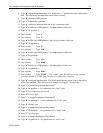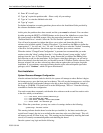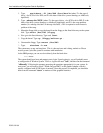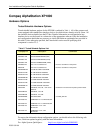
Linux Installation and Configuration Guide for AlphaServer 55
ECG513/0100
24. Type “n” to add a new BSD partition – the /usr partition in this case.
25. Type “d” for partition d.
26. First cylinder: Type “8201”.
27. Last cylinder: Type “17365” ; last cylinder - one. Do NOT accept the program
generated default of "17366" here, because of possible disk corruption).
28. Type “p” to print the partition table. You should notice that the fstype is set to unused for
each of the partitions. This will have to be changed via “toggle” – see next step.
29. Type “t” to change the partitions filesystem id.
30. Type “a” for partition a – boot partitions use a “boot” code.
31. Type “L” to list the codes you can use.
32. Enter “d” for boot type.
33. Type “t” to change the partitions filesystem id.
34. Type “b” for partition b – / (root) partitions use a “ext2” code.
35. Enter “8” for ext2 type.
36. Type “t” to change the partitions filesystem id.
37. Type “c” for partition c – swap partitions use a “swap” code.
38. Enter “1” for swap type.
39. Type “t” to change the partitions filesystem id.
40. Type “d” for partition d – /usr partitions use a “ext2” code.
41. Enter “8” for ext2 type.
42. Type “p” to print the partition table – Please verify all your settings.
43. Type “w” to write the disklabel to the disk.
44. Type “q” to quit.
45. Tab to DONE and press ENTER.
For further information on creating partitions please refer to the Installation Guide provided by
the software distribution vendor.
Post-Installation
System Resource Manager Configuration
After the software has been loaded to the disk, the system will attempt to reboot. Before it begins
the bootup process, press the front panel reset button. This will stop the bootup process, and
allow you to make the final configuration changes to be able to boot directly from the disk,
instead of the floppy or CD-ROM. You should now be at the SRM prompt, ">>>". Enter the
following commands to finalize the configuration.
You need to enter these commands, such that the drive reference on the second line needs to refer
to the drive which you installed to:
P00>>>set boot_file 2/boot/vmlinux.gz
P00>>>set bootdef_dev dka0
P00>>>set boot_osflags "root=/dev/sda2"



